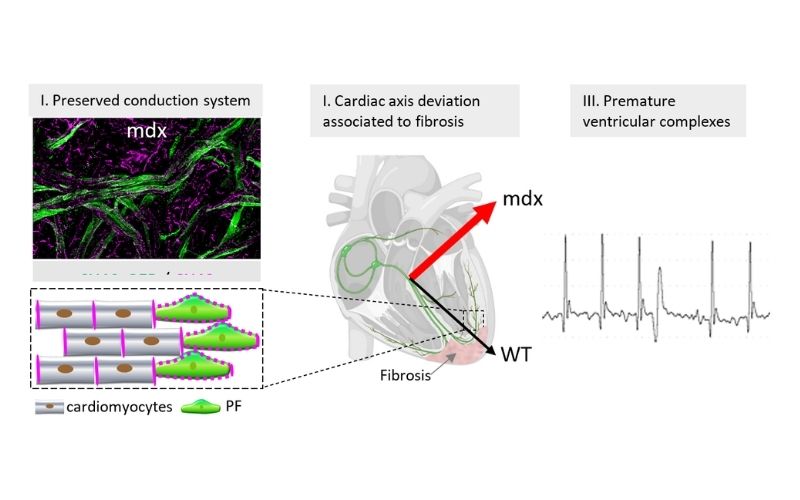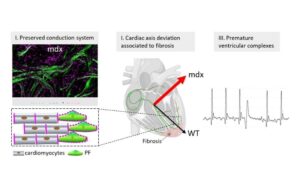Duchenne muscular dystrophy (DMD), caused by mutations in the gene coding for the intracellular protein dystrophin, is a severe X-linked disease characterized by progressive muscle weakness and degeneration. In addition to this skeletal muscle degeneration, there is also a high prevalence of cardiomyopathies in these patients, and ventricular arrhythmias, such as ventricular tachycardia and ventricular fibrillation, represent one of the leading causes of death in these patients. It has recently been suggested that Purkinje fibers (PF), cardiac cells specialized in the propagation of electrical activity in the heart, play a key role in the development and maintenance of these ventricular arrhythmias. Dystrophin is abundantly expressed in PFs compared with other cardiomyocytes, and dystrophic PFs show vacuole degeneration in humans and dogs. Thus, dystrophin may play a key role in the function and integrity of cardiac PFs.
In this article published in Frontiers in Physiology, Juliette Vahdat of the Kelly team shows that dystrophin is indeed overexpressed in the PF in a DMD mouse model (mdx mice), but that the ventricular arrhythmias observed in these mice are linked to fibrosis rather than PF degeneration. This study thus demonstrates that PFs are not necessarily the site of initiation of ventricular arrhythmias in mice, and the limitations of the mdx mouse model for studying DMD-related cardiomyopathies in humans.
Vahdat J, Sauer J, Marksteiner J, Hilber K, Miquerol L. Conduction defects and arrhythmias in mdx mice are not associated with a degeneration of the cardiac Purkinje network. Front Physiol. 2025 Jun 26;16:1607916.




